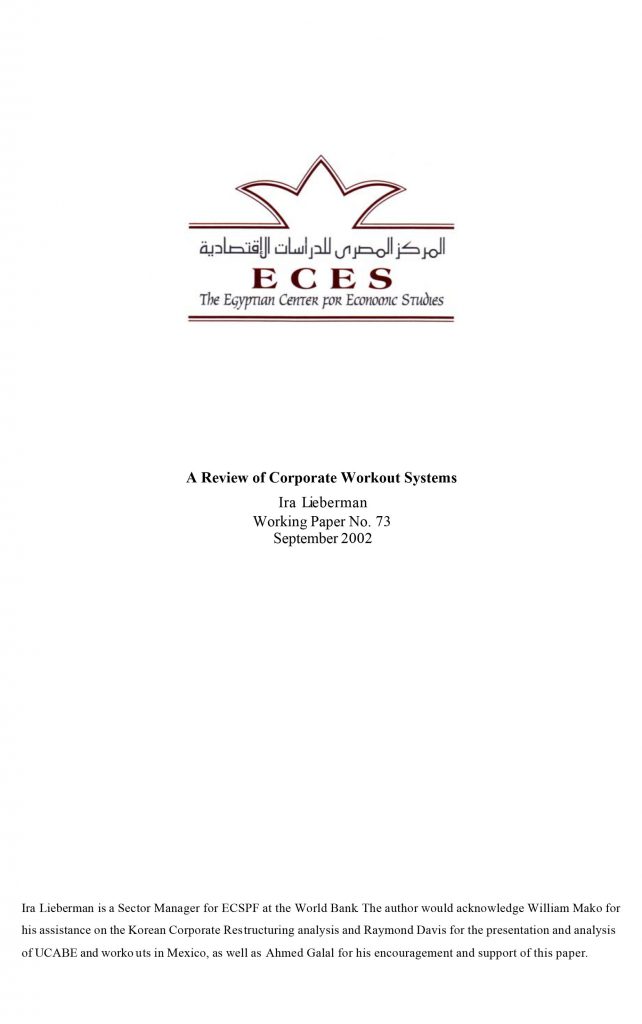Abstract:
The inability of debtors to meet their obligations is a problem facing both developing and developed countries alike, particularly during financial crisis or periods of liquidity lightening. The experiences of the United Kingdom, Korea, and Mexico, reveal that financial restructuring avoids unnecessary liquidation of viable companies, an upsurge in unemployment, and a loss of productive capacities.
Financial restructuring approaches in each of these three countries may vary in the institutional structure but the rules have common features, and take into consideration the specific country case such as the nature of corporate debt, how much of it was denominated in foreign currency and how much was held by foreigners. New lending, interest rate reduction, convertible bonds, and debt-equity conversion were the most employed instruments in the financial restructuring of viable companies.
Successful financial restructuring requires: cooperation between and independent central bank, and a higher government authority to push creditors and debtors to reach a voluntary agreement, managed by a lead bank without the interference of legislative authorities. Both creditors and debtors must be ready to bear some losses, financial restructuring units within banks need to be created, and the bankruptcy law should be strengthened. An arbitration unit is required, and the company’s long-term viability, based on well-defined criteria, should be assessed by an independent unit.

A Review of Corporate Workout Systems
08-10-2002
Author(s): Ira Lieberman
Publication Number: ECES-WP73-E
